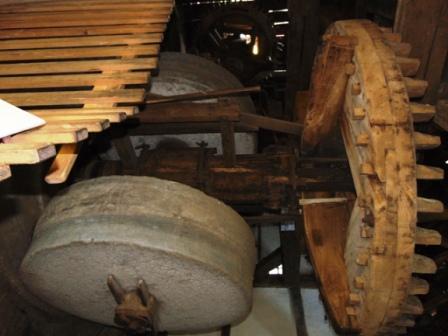A spring insect has been discovered in European gardens that uses interlocking gears as mechanical gear to synchronize two hind leg parts when jumping. Each strip of the young Issus is about 400 micrometers long and has between 10 and 12 teeth on both sides, so with a gear ratio of 1: 1.
A gear wheel is a toothed disc in a structure which can be used to bring movement along or change its speed or direction.
Gears have been around a very long time. In 1901 there was at Antikythera a bronze mechanism emerged from about 140-80 BC. It proved to be a kind of analog computer (specialized clockwork) with gears that can make complicated astronomical time calculations (e.g. dates of eclipses). Since 1610, we know in the West already robots with wheels and bellows that write independently or play an instrument (www.dancefans.cultu.be<, <History..>)
 We know mini pinions from watches, but also large wooden wheels of old mills.
We know mini pinions from watches, but also large wooden wheels of old mills.
The wooden wheels of mills you can imagine as a hub with spokes but no rim, or protruding through the rim.
For a crown wheel, there is a rim, and there are on the rim timber stubble, parallel to the wheel axle. This allows a wheel to be driven in the other direction, in an angle of 90⁰.
It can also have two parallel wheels, which are connected by rim stubbles with each other. We call this a lantern gear (also pinion). If one of the wheels is smaller, you may have a conical (sharper tapering) connection (inner rim smaller than outer rim).
If we have a wheel with inwards (towards the center) pointing teeth, without hub, it’s called a ring gear (external gear).
The wheel that delivers the motion is the gear wheel or pinion.
If two wheels rotate with the teeth in one another is that always in the opposite direction.
You want them to rotate in the same direction, then you need a third (small) wheel between them.
The teeth are always appropriate, so in the same proportions.
